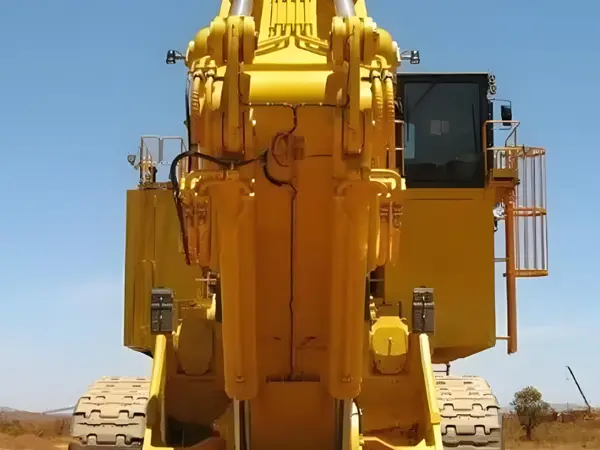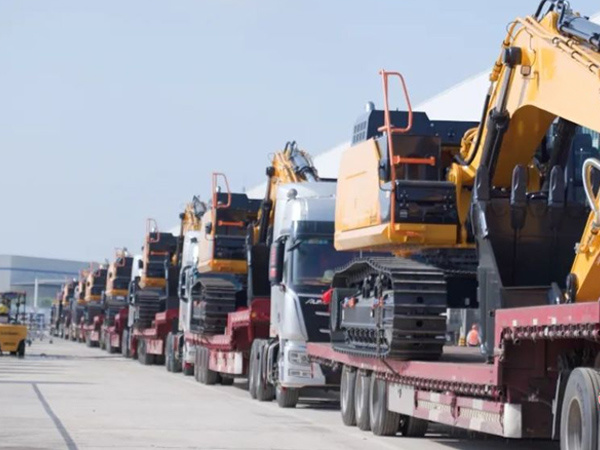The Vital Role of Forestry Excavators in Landscape Restoration: A Comprehensive Guide
Release time:
2025-02-19
The Contribution of Forestry Excavators to Landscape Restoration Table of Contents 1. Understanding Forestry Excavators 2. The Importance of Landscape Restoration 3. Key Features of Forestry Excavators 4. How Forestry Excavators Aid in Landscape Restoration 4.1 Soil Rehabilitation 4.2 Erosion Control 4.3 Vegetation Management 4.4 Waterway Restoration 5. Technological Advancements in Forestry Excav
The Contribution of Forestry Excavators to Landscape Restoration
Table of Contents
1. Understanding Forestry Excavators
2. The Importance of Landscape Restoration
3. Key Features of Forestry Excavators
4. How Forestry Excavators Aid in Landscape Restoration
4.1 Soil Rehabilitation
4.2 Erosion Control
4.3 Vegetation Management
4.4 Waterway Restoration
5. Technological Advancements in Forestry Excavation
6. Case Studies of Successful Landscape Restoration
7. Environmental Benefits of Forestry Excavators
8. Future Trends in Landscape Restoration Using Excavators
9. FAQs
10. Conclusion
1. Understanding Forestry Excavators
Forestry excavators are specialized heavy machinery designed for various tasks within forested areas. Unlike standard excavators, these machines are equipped with features that make them particularly suited for navigating challenging terrains. They often include rubber tracks for minimal soil disturbance, specialized grapples for tree removal, and attachments for mulching. This versatility allows forestry excavators to play a critical role in both timber harvesting and landscape restoration.
2. The Importance of Landscape Restoration
Landscape restoration is essential for revitalizing ecosystems that have been degraded by human activity, natural disasters, or climate change. Restoration efforts aim to rebuild habitats, enhance biodiversity, and improve the resilience of landscapes to environmental stressors. The use of forestry excavators in these processes not only expedites restoration but also enhances the ecological integrity of the areas involved.
3. Key Features of Forestry Excavators
To understand how forestry excavators contribute to landscape restoration, it is crucial to recognize their key features. These machines often possess:
- **High Mobility**: Rubber tracks allow them to traverse difficult terrains without causing significant soil damage.
- **Custom Attachments**: Various tools can be attached to assist in specific tasks, such as tree cutting, mulching, or soil grading.
- **Precision Control**: Advanced hydraulic systems enable operators to perform delicate tasks with precision, crucial for restoration work.
These attributes make forestry excavators indispensable in effective landscape restoration.
4. How Forestry Excavators Aid in Landscape Restoration
Forestry excavators facilitate various aspects of landscape restoration through their unique capabilities. Below, we explore some of the primary functions they serve.
4.1 Soil Rehabilitation
Forestry excavators can break up compacted soil, improving aeration and water infiltration. This is vital for restoring soil health, allowing native vegetation to establish and thrive. By employing specific techniques, such as ripping or subsoiling, these machines help to rejuvenate degraded lands.
4.2 Erosion Control
In areas prone to erosion, forestry excavators can assist in creating barriers, such as terraces or check dams. These structures help slow the movement of water, reducing soil loss and promoting sediment retention, which is essential for landscape stability.
4.3 Vegetation Management
Managing overgrown or invasive vegetation is a critical step in restoration. Forestry excavators equipped with mulching heads can efficiently clear unwanted vegetation, preparing the site for native species reintroduction. This not only enhances the aesthetic value of the landscape but also supports local wildlife habitats.
4.4 Waterway Restoration
Forestry excavators can be instrumental in restoring waterways by removing debris, reshaping banks, and reestablishing natural flow patterns. This work is crucial for maintaining healthy aquatic ecosystems and ensuring the overall health of the landscape.
5. Technological Advancements in Forestry Excavation
The evolution of technology within the forestry excavation industry has significantly improved the efficiency and effectiveness of landscape restoration efforts. Innovations such as GPS-guided systems, remote-controlled excavators, and advanced hydraulic attachments have enhanced precision and safety. These technologies not only streamline operations but also reduce the environmental footprint of restoration projects.
6. Case Studies of Successful Landscape Restoration
Numerous case studies highlight the successful application of forestry excavators in landscape restoration. For instance, a project in the Pacific Northwest involved the use of excavators to restore a degraded watershed. The machinery was vital in removing invasive plant species, rehabilitating stream banks, and reintroducing native flora. The result was a revitalized ecosystem that improved water quality and increased local biodiversity.
7. Environmental Benefits of Forestry Excavators
The use of forestry excavators in landscape restoration provides several environmental benefits:
- **Biodiversity Enhancement**: By facilitating the growth of native species, these machines help restore balance to ecosystems.
- **Carbon Sequestration**: Restored landscapes can sequester carbon, contributing to climate change mitigation efforts.
- **Improved Water Quality**: By restoring waterways and managing vegetation, excavators help protect water resources from pollution and sedimentation.
These benefits underscore the importance of utilizing forestry excavators in ecological restoration projects.
8. Future Trends in Landscape Restoration Using Excavators
As the field of landscape restoration continues to evolve, several trends are emerging that involve forestry excavators. These include:
- **Increased Automation**: The rise of automation technology promises to enhance efficiency and safety in excavation tasks.
- **Sustainability Practices**: A growing emphasis on sustainable practices will likely shape the design and use of forestry excavators, ensuring minimal environmental impact.
- **Collaborative Efforts**: Future restoration projects may increasingly involve partnerships between government agencies, non-profits, and private companies, maximizing resources and expertise.
These trends indicate a promising future for landscape restoration efforts involving forestry excavators.
9. FAQs
1. What is a forestry excavator?
A forestry excavator is a specialized piece of heavy machinery designed for use in forested areas, equipped with features that make it suitable for various forestry-related tasks, including landscape restoration.
2. How do forestry excavators help in soil rehabilitation?
Forestry excavators can break up compacted soil, improving aeration and water infiltration, which is crucial for restoring soil health and enabling vegetation to thrive.
3. What are the benefits of using forestry excavators for vegetation management?
These machines can efficiently clear invasive or overgrown vegetation, making way for native species and enhancing both the aesthetic and ecological value of the area.
4. Are there any environmental concerns associated with using forestry excavators?
While there are some concerns related to soil disturbance and habitat disruption, when used correctly, forestry excavators offer significant benefits to ecosystem restoration and can be operated with minimal impact.
5. What advancements are being made in forestry excavation technology?
Recent advancements include GPS-guided systems, remote-controlled excavators, and more efficient hydraulic attachments, all of which enhance precision and reduce environmental footprints.
10. Conclusion
Forestry excavators play a critical role in landscape restoration efforts, providing essential services that support the recovery of degraded ecosystems. From soil rehabilitation to vegetation management, these machines enhance the effectiveness of restoration projects and contribute to the overall health of our landscapes. As technology continues to advance and the importance of ecological restoration becomes more widely recognized, the contributions of forestry excavators will undoubtedly remain invaluable in the quest for a more sustainable future.





